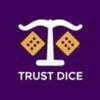With the double up feature on many video poker machines, is it a 50/50 proposition, and if so, how long would you recommend playing this option before quitting? Jenny S.
Yes, Jenny, the house is offering you a 50-50 proposition on the Double-up option after winning a hand of video poker.
This Double Up bet involves five cards being drawn face down, the machine drawing one card first, then you selecting one of the remaining four cards. In essence, Jenny, you are playing high/low against a machine-dealt playing card.
If you draw a card higher than the one drawn by the machine, you are paid 1-to-1 on the wager. The Double Up offer continues after each successive win until you decide to stop, or you lose.
As to the part of your question where you ask when to quit, well, Jenny, even though after each subsequent win, the same 50/50 chance of winning by pressing the double up option applies, when chasing a specific winning streak, say, three, four or five in a row, you now start bucking the odds. Attempting four wins in succession, the odds drop to 6.25%. For five consecutive wins, you only have a 3.13% chance of this occurrence happening, NOT 50/50.
This bet also comes with a few hitches. Machines limit the doubling from as little as five times in a row to 10,000 coins returned ($2,500), so, Jenny, don’t quit your day job.
Additionally, with most machines, ties are a push, and not a casino win. If ties are pushed, the game is square, with an expected value of 100%. However, if ties are considered a house win, then the Double Up bet gives the casino an advantage of 5.8%.
Next, some casinos do not allow you to use your slot club card and chase down cash points on double-up bets.
Also, watch your double-up winnings so that you don’t go over the $1,200 threshold unless you don’t mind being handed a W2G.
Finally, because video poker is typically a negative expectation game, when saying yes to the double or nothing feature, you increase the total money wagered, but at no cost to that expected loss, thus, you lower the overall house edge. Nevertheless, if you are playing a video poker machine that has a 100% plus return paytable, I would recommend against the double-up bet since it will lower your overall advantage.
How are you supposed to play the following “soft” hand at blackjack? An ace, two, three (soft 16) are you to hit or stand? My strategy card only shows hitting an Ace-five. Nancy C.
Players make more mistakes with soft hands (a hand that includes an Ace which can be used as a one or an 11) than with almost any other hand in blackjack.
A multi-card soft hand happens frequently after you hit your initial soft hand. What many players don’t realize is that you can never bust a soft hand with an additional hit.
Your strategy card, which in essence is a crib card matrix of 270 hand situations, is designed to give you a concise and definitive play for every starting hand that you are dealt. Due to a lack of space, an Ace – five denotes any amount of cards that equal a soft 16.
The example you gave, Nancy, an ace, two, and three (soft 16), should always be played the same as if it were an ace – five. Stick with perfect basic strategy and continue to HIT, or your strategy card dictates you stand on a soft total. An example of a soft hand total where you would stand would be a soft 19 (Ace – 8, or an Ace, two, two, Ace, three) against any dealer up-card.
Gambling Wisdom of the Week: “May your experiences in life be filled with aces and faces.” —G. D. Sheneman, Honest to Goodness Blackjack




















